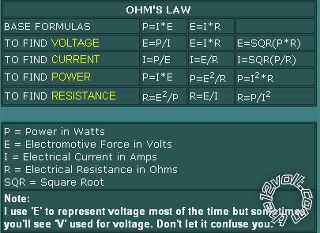If you want to try to determine the amplifier's power output, the efficiency of the amplifier class won't be a factor. Efficiency is a factor when you are trying to find out how much power is being pulled from the source (if my amplifier does X watts then how many amps do I need from the vehicle?).
Truth be told, you can't determine your amp's power output unless you put it through a controlled bench test. But if it's a respected brand you should use the manufacturer's published RMS output data. Specs should be reported at both 14.4 volts and at 12.6 volts from the source. But even if there is only one source voltage showing in the specs you can extrapolate the wattage to conform to your vehicle's actual battery voltage measurement under full load conditions (as when you are playing the system). If you take readings consistently at 13.1 volts at the battery under load conditions, find the value per volt and then you can conform the published data to fit your actual vehicle.
That is using voltage at the source, the battery. But there is also voltage (AC) at the output of your amplifier. You have to make sure you understand which voltage, DC at the source or AC at the amplifier, you need to know for any of your calculations.
Refer to Ohm's Law chart
And I like this one too, borrowed from BCAE1.com:

With Ohm's Law, if you know any two of the given variables then you will be able to use the calculation to find the third. You are trying to find wattage, so the variables that you will have to know are shown in the diagram. For instance, if you know the impedance of the subs and the voltage output at the amplifier's speaker output, then you can figure power output based on those numbers using P = E^2 / R. For your "known" factors, you can get close with the ohms but not entirely accurate, for example by using the number 2 as impedance. (You don't know if it's exactly 2 ohms load at the amp or if it's 2.4 or 1.8 at any given frequency....) And you can use an AC voltage measurement taken at the amp's speaker output (with sub disconnected) while playing a test tone in the sub range. But even when you are careful to use a tone recorded at 0db and have taken a steady measurement with gain set perfectly, you still can't be sure that the voltage you read is entirely accurate as it relates to the music sources that you normally play. So your calculation can only be close, as any deviation in a variable must change the calculated output.
An example: impedance is 2; measured voltage is 28 (voltage is measured at one output channel...measure both L and R but use one of them, don't add them). Ohm's Law says "power equals volts squared divided by ohms". 28 * 28 = 784, and 784 / 2 = 392. Your estimated power in this example is 392 watts.
Now at this point you could use these findings to help determine how much power is needed from the car to provide the calculated 392 subsonic watts. Efficiency of the amp comes into play at this time, and you can use this calculation:
(RMS X 2) / (e X 2) = total RMS. Then use Ohm's Law I = P/E to find demand in amperes.
e = efficiency of amplifier
total RMS = watts demanded from source
65%, if used in the calculation, is written as 0.65
Build the box so that it performs well in the worst case scenario and, in return, it will reward you at all times.
 Printable version
Printable version



















